MOTHER EARTH NEWS FAIR
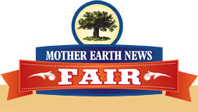 Visit us at
Visit us at
Mother Earth News Fair
Premier's booth #1570 & 1571
Puyallup, WA
May 31 - June 1, 2014
Premier's booth #151 & 153
Seven Springs, PA
September 12-14, 2014
Premier's booth -- TBA
Topeka, KS
October 25-26, 2014
CLOSEOUTS
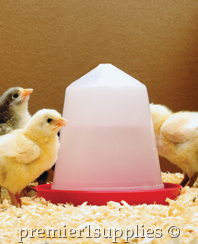
Classic W1 for chicks until they are large enough not to drown in a larger water pan.
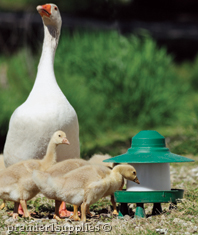
Goslings with their large beaks are able to eat readily from an Ascot Feeder without grill. Rain Hat is sold separately.
See all of our
Closeout Poultry Products.
PREMIER NETTING
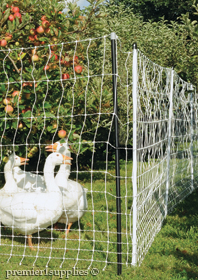
PermaNet® 12/48/3 with FiberTuff™ Posts, which gives the netting support at the corners. Also for extra support for curves and major directional changes.
PermaNet® Plus 12/48/3
To help with sagging, we added posts to shorten the distance between posts.
(6.8 ft instead of 8.33 ft)
PermaNet® 12/48/3
Designed to stay in place longer than normal net. Features the same mesh as PoultryNet attached to thicker posts.
Note: PermaNet 12/48/3 won’t stop young birds small enough to slip through the 2" x 3" openings at the bottom of the net. For the first few weeks when birds are small, we suggest keeping them inside the coop or making a small temporary pen with NoShock Chick Fence inside the netting.
Netting Kits
Why purchase a kit?
Includes support posts necessary for corners and curves. Beyond that netting is a complete fence on its own—lacking only a suitable fence energizer. |
PREMIER ENERGIZERS
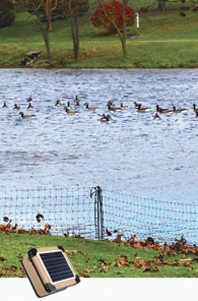
Using a Premier PRS Solar Energizer to electrify VersaNet® 11/30/3. This net combination works well to contain heavy ground-based birds.
Premier PRS Solar Energizers
| • |
Lowest price/joule for solar units. |
| • |
Can be set on the soil. In summer a near-flat angle facing south works. In fall, winter and spring increase the angle. The goal is to keep the panel perpendicular to the sun’s noontime rays. In winter raise the unit above the snow. |
| • |
Less likely target for vandals and thieves due to brown color plus placement on or near the soil. |
| • |
All-metal custom-made case of aluminum and stainless steel that’s strong and rugged. |
| • |
Light brown color to reduce internal heat buildup. |
| • |
Very simple to install and use. |
Energizer Kits
Why purchase a kit?
Users tell us that kits simplify their purchasing decisions—because electrified fences require energizers, ground rods, accessories, etc. |
Helpful energizer information and videos
How to get your PRS Solar Energizer ready for fencing season
Energizer Comparison Chart
Solar Energizer FAQs
|
 |
 |
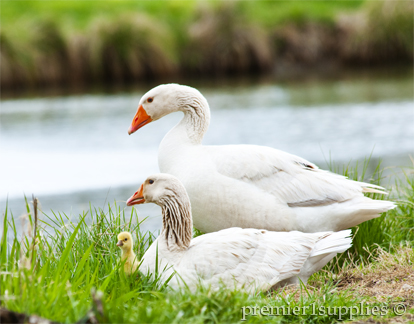
Waterfowl are an interesting addition to most farm flocks. Ducks and geese have attitudes all their own and are a natural compliment to ponds and creeks. A pond or place to swim is not required, but waterfowl always appreciate having somewhere to swim and groom themselves.
Waterfowl for the Farm
Though they have the ability to turn any area with water into a muddy mess, waterfowl seem to find their way onto farms across the country. Even Premier has a few ducks on their ponds (if you stop by you'll notice them on the drive in).
We also have seven large geese on a pond at our East Farm. They spend their days grazing, swimming, preening, harassing the guard dogs and letting the shepherds know when they intrude on their turf. Right now one of the geese is sitting on a nest of 12 eggs. The geese are always interesting.
Below are articles on raising ducks and geese from the University of Missouri and Harvey Ussery (he's supplied a few articles to us before).
EXTENSION NEWS
Brooding and Rearing
Ducklings and Goslings
Glenn Geiger and Harold Biellier, Department of Animal Sciences
Copyright 1993 to 2013 University of Missouri.
Published by MU Extension, all rights reserved.
Brooding requirements
Natural brooding
Goslings and ducklings can be successfully brooded by broody chicken hens and most breeds of ducks and geese. If the young birds were not hatched by the broody female, place them under her at night. Be certain broody birds are free of lice and mites. Provide the hen and her brood with a dry comfortable shelter.
The hen will need grain and plenty of fresh, clean water supplied in a container that will not allow the young to get wet.
Artificial brooding
Today, hatcheries produce day-old ducklings and goslings in large numbers. Commercial growers brood and rear them in about the same way they would baby chicks.
Ducks and geese are hardy and are not susceptible to many of the common poultry diseases. This makes them easy to raise. Brooding requirements are simple and special housing or equipment is not necessary. Because of their rapid growth and early feathering, they do not require as long a brooding period as do baby chicks.
READ MORE »
RAISING DUCKS AND GEESE ON THE HOMESTEAD
The Homestead Waterfowl Flock
I wrote this article for the June/July 2006 issue of Backyard Poultry Magazine, a great resource for the homestead flock owner. - Harvey and Ellen Ussery
A Multi-Purpose Flock
A small waterfowl flock is a great addition to the homestead. You may prefer either ducks or geese to start, but I like keeping both: Their needs and care are similar enough that it is easy to run them together in the same flock. When I refer to the “homestead” waterfowl flock, I have in mind utilizing them not only as a part of the household economy, but incorporating their natural behaviors to assist with the work of the homestead. The waterfowl recommend themselves as homestead poultry especially because they are healthy and vigorous—almost entirely disease free—are easy to raise, and can forage a lot of their own food after the brooder phase.
Breeds (and Species)
Before you decide on your choice of breeds, there are some facts about these species you should know.
Read More »
This article is Copyright by Harvey Ussery and reprinted with permission. Harvey Ussery is the author of The Small Scale Poultry Flock (Chelsea Green, 2011), on sale in Premier's book section. Visit Harvey's website at www.themodernhomestead.us.
WATERFOWL TROUGHS

(photo at left) Adult ducks and geese have no problem eating next to one another from a PortaTrough. (middle photo) Ducks and geese require water for drinking and grooming. A PortaTrough or foot bath provides for both. (photo at right) Stackable for easy movement and storage.
PortaTrough™ 3 & PortaTrough™ 5
| • |
All-purpose troughs that work well for providing feed or water to waterfowl. |
| • |
The deep water allows them to immerse their heads to clean their eyes and nostrils. |
| • |
A side hole in the trough makes it easy for folks to dump out soiled or old water. |
| • |
High sides reduce wastage when used for feed, won’t tip over.
|
SureFoot Bath
| • |
If you have a landlocked area for your ducks and geese, this nearly indestructible tub gives them a means to drink and groom with lots of water—which they definitely prefer. |
| • |
For ducklings and goslings we use bricks or rocks to make “steps” so they can get in and out. |
CHOOSING A WATERER/FEEDER
Choosing a waterer…
The size is dependent on:
| • |
Number and size of birds. |
| • |
How often you prefer to water them. |
Pick a waterer that will provide enough clean water for your birds between your visits to the coop. If you have a few birds or frequently water, you can manage with a smaller waterer. If you have many birds, you need a larger one, especially during the summer.
How much water will a bird drink in a day?
A medium-size adult chicken will drink about 0.08 gal (just over a cup) on a hot day. Temperature, size, age and amount of salt in the feed will cause this figure to vary.
For chicks use a small waterer with a drown-proof or narrow-lipped base.
For waterfowl use a waterer with a wide base so they can easily fit their wide beaks into the tray.
If you dislike your waterer, try a different design. Some users prefer one style over another.
Choosing a feeder…
The size is dependent on:
| • |
Keep feed dry (if outside). |
| • |
Be easy to refill. |
| • |
Hold enough feed to keep refills to a minimum. |
| • |
Minimize feed waste. |
We prefer to use feeders for adult birds that have a grill. Grills or guards prevent birds flicking and scratching feed out onto the ground with their beaks.
Keep feeders for adult birds several inches off the ground so they can’t easily scratch bedding and litter into the feed.
For chicks, you can achieve the same useful separation between bedding and water/feed with a chick stand.
|
|